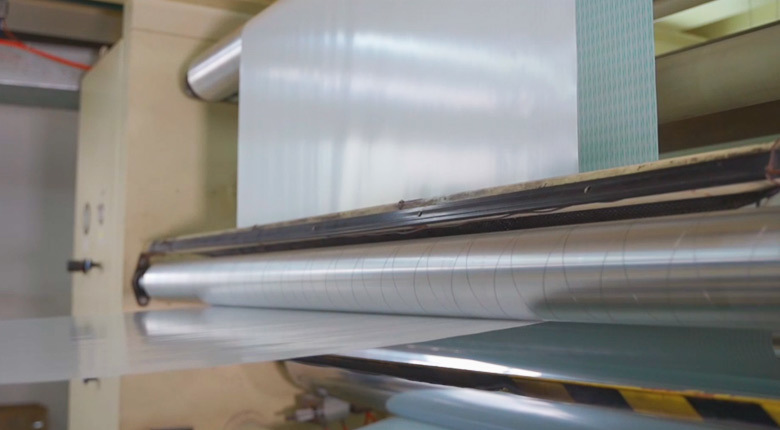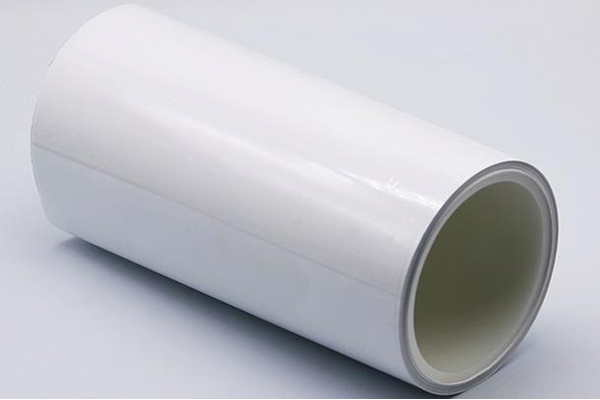What are the structural characteristics of using release paper?
Release time:
2024-01-23
Release paper, also known as isolation paper or anti-adhesion paper, is a type of anti-adhesion paper that prevents the prepreg from sticking together and protects the prepreg from contamination. Next, the editor will detail the general structural characteristics of release paper:
Release paper, also known as isolation paper or anti-adhesion paper, is a type of anti-adhesion paper that prevents the prepreg from sticking together and protects the prepreg from contamination. Next, I will detail the structural characteristics that release paper generally has:
Multi-layer structure
Base paper: This is the foundational layer of the release paper, providing support and strength for the entire structure. Common base paper materials include glassine paper, kraft paper, and double-coated paper. Glassine paper has good high-temperature resistance, moisture resistance, and oil resistance, with a smooth surface, making it suitable for applications with high requirements for moisture resistance and high temperature, such as food packaging; kraft paper has higher strength and toughness, suitable for packaging or processing of products that require higher mechanical strength; double-coated paper is relatively soft, lower in cost, and commonly used for ordinary products that do not have particularly high requirements for paper performance.
Coating: Located above the base paper, its main function is to enhance the paper's moisture and oil resistance and provide a good adhesion base for the silicone oil coating. The coating is usually formed by applying a layer of uniform film on the surface of the base paper using processes such as casting or extrusion with plastic particles (such as polyethylene). This film can effectively block the penetration of moisture and grease, improving the overall protective performance of the release paper, allowing it to maintain good stability under different environmental conditions.
Silicone oil: This is the key functional layer of the release paper, coated on top of the coating layer. Silicone oil has extremely low surface tension, allowing the release paper surface to exhibit good release effects, preventing sticky substances from adhering to it. The amount and quality of silicone oil coating directly affect the release performance of the release paper. Generally, the coating amount of solvent-based silicone oil ranges from 0.30 to 0.80 grams per square meter, while the coating amount of solvent-free silicone oil ranges from 0.80 to 1.30 grams per square meter.
Single and double-sided characteristics
Single-sided silicone release paper: One side is coated with silicone oil, while the other side is ordinary paper or coated paper. This structure of release paper is relatively low in cost and suitable for applications that only require single-sided release effects, such as isolation of single-sided adhesive tape and anti-adhesion for certain printed materials. Among them, single-sided white release paper is more commonly used, as its white surface is convenient for printing and writing, meeting the needs for marking or printing on the release paper.
Double-sided silicone release paper: Both sides are coated with silicone oil, providing better release effects and moisture resistance. Double-sided silicone release paper is suitable for situations where good isolation from sticky substances is required on both sides, such as double-sided adhesive tape and packaging of electronic components, effectively preventing tape or components from sticking together during storage and use, ensuring product quality and performance.
Different weight selections
The weight of release paper typically ranges from 35 grams per square meter to 250 grams per square meter, or even higher. Lower weight release paper, such as around 35 grams per square meter to 60 grams per square meter, is relatively light and flexible, suitable for products with strict requirements for weight and thickness, such as packaging for small electronic components and isolation for precision instruments, but it is relatively weak in strength and stiffness; while higher weight release paper, such as 150 grams per square meter to 250 grams per square meter and above, has higher strength and stiffness, able to withstand greater pressure and tension, suitable for packaging and isolation of larger or heavier products, such as packaging for large automotive parts and isolation of construction materials.
Special performance structure
High-temperature resistance: Some release papers use special base paper materials and silicone oil formulations to provide good high-temperature resistance. For example, some release papers used in the electronics industry can withstand high-temperature environments during the soldering process of electronic components without deformation, carbonization, or silicone oil volatilization, ensuring effective isolation and protection of electronic components before and after soldering.
Anti-static performance: In some packaging of electronic components sensitive to static electricity, release papers with anti-static properties are used. This type of release paper usually contains anti-static agents in the base paper or silicone oil, effectively preventing the generation and accumulation of static electricity, avoiding damage to electronic components caused by static electricity, and ensuring product quality and reliability.
Flexibility and elasticity: To adapt to the surfaces of objects with different shapes and curves, release paper needs to have a certain degree of flexibility and elasticity. By selecting appropriate base paper materials, adjusting the coating amount of silicone oil, and modifying curing conditions, release paper can maintain a certain strength while having good flexibility and elasticity, allowing it to closely fit the surface of objects for better isolation and protection.
More information
Tel: 0086-513-69812188
E-mail: andy@paoyan.com.cn
Address: 188 Baichuan Road, Hai’an High-tech Zone, Jiangsu Province, China.

Sweep and pay attention to Baoyan Technology






